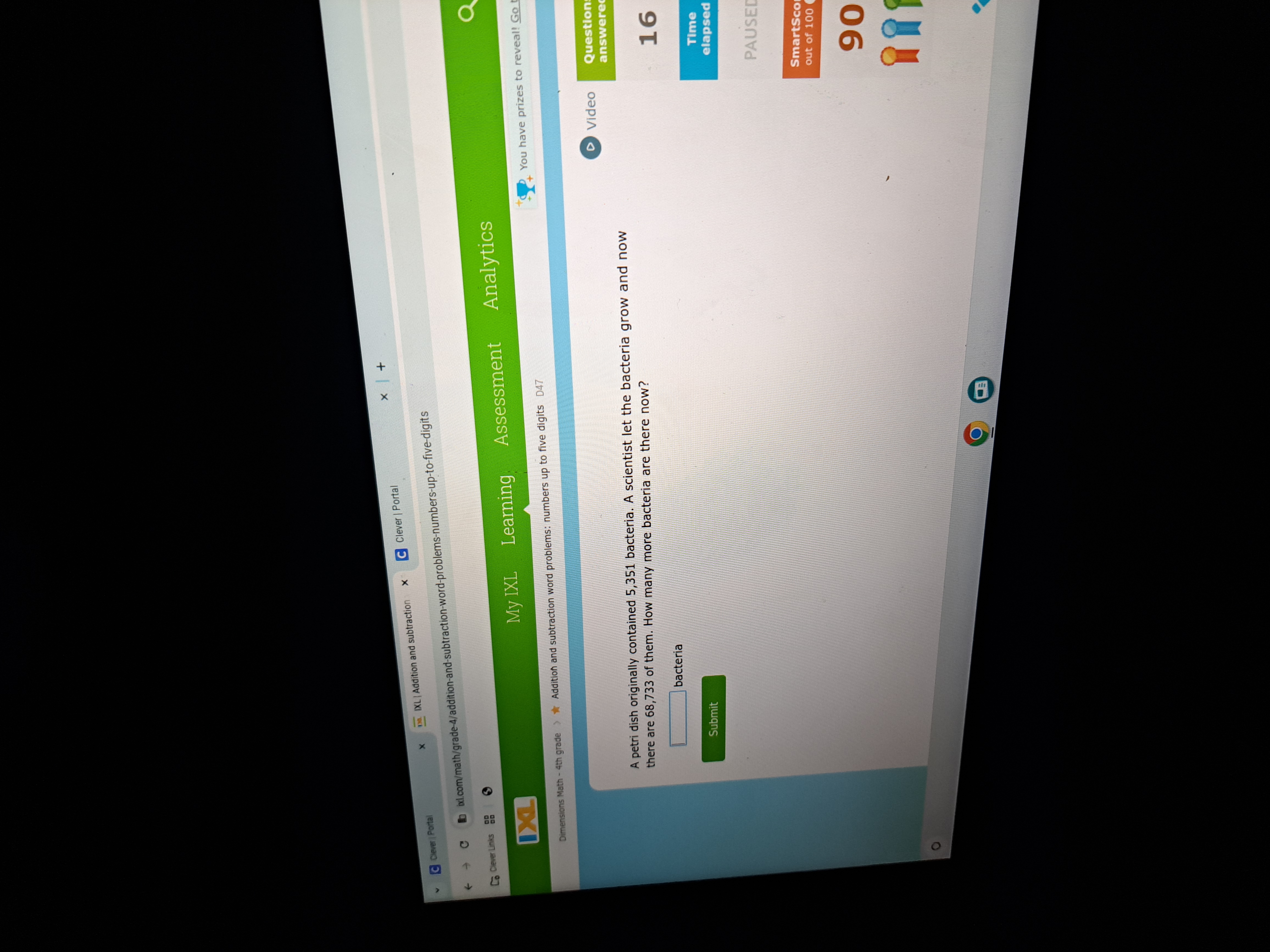A petri dish originally contained 5,351 bacteria. A scientist let the bacteria grow and now there are 68,733 of them. How many more bacteria are there now?

Understand the Problem
The question is asking how many more bacteria are present now compared to the original number. This involves subtracting the initial number of bacteria from the current number of bacteria.
Answer
The number of more bacteria present now is \( 63,382 \).
Answer for screen readers
The number of more bacteria present now is ( 63,382 ).
Steps to Solve
- Identify the initial and current bacteria counts
The problem gives us two numbers: the initial number of bacteria, which is 5,351, and the current number, which is 68,733.
- Write the subtraction equation
To find out how many more bacteria there are now, we will subtract the initial number from the current number:
$$ \text{More Bacteria} = 68,733 - 5,351 $$
- Perform the subtraction
Now, we calculate the difference between the two numbers.
- Calculate the result
$$ \text{More Bacteria} = 68,733 - 5,351 = 63,382 $$
The number of more bacteria present now is ( 63,382 ).
More Information
This calculation shows how growth can be measured in a scientific context, specifically with bacteria. The vast increase in numbers demonstrates how quickly organisms can multiply under the right conditions.
Tips
- Incorrect subtraction: Careful attention should be paid to each digit in subtraction to avoid errors.
- Misreading the problem: Ensure that the initial and current numbers are clearly understood.
AI-generated content may contain errors. Please verify critical information